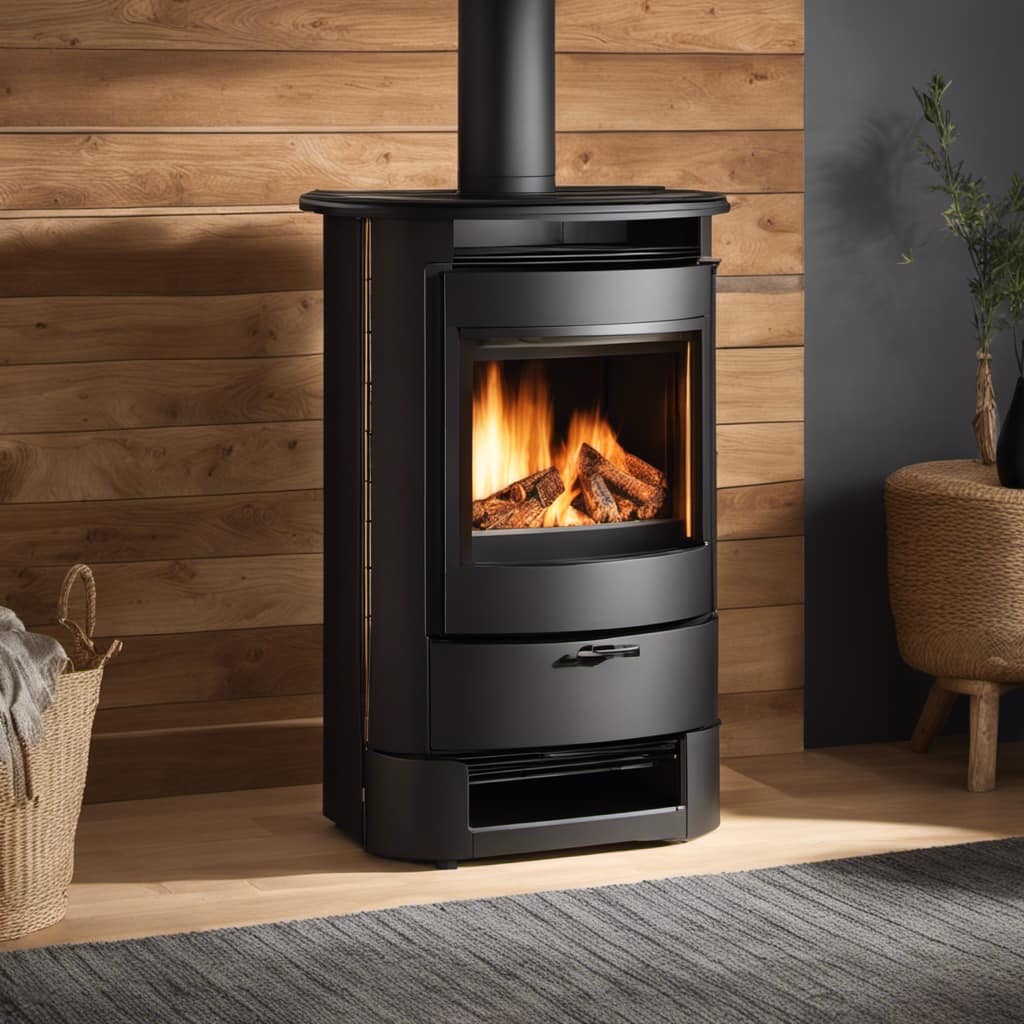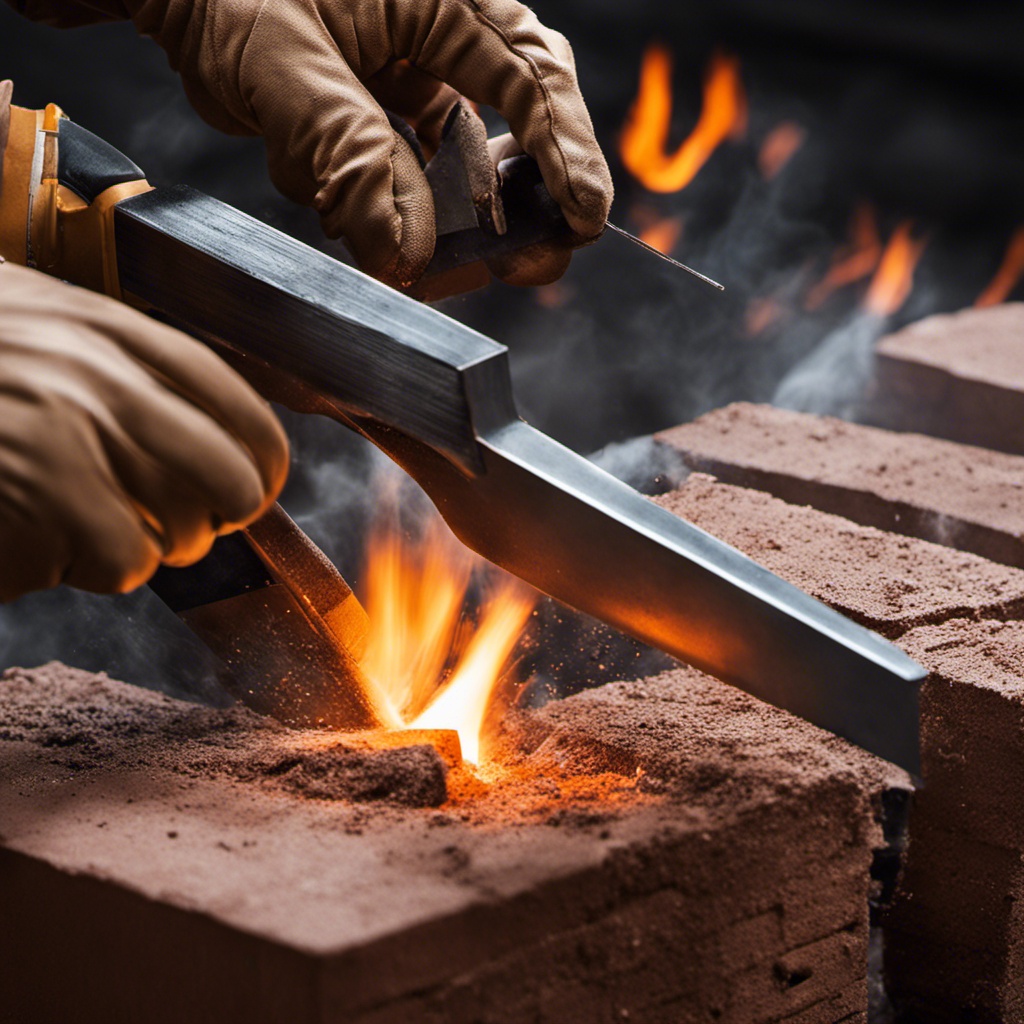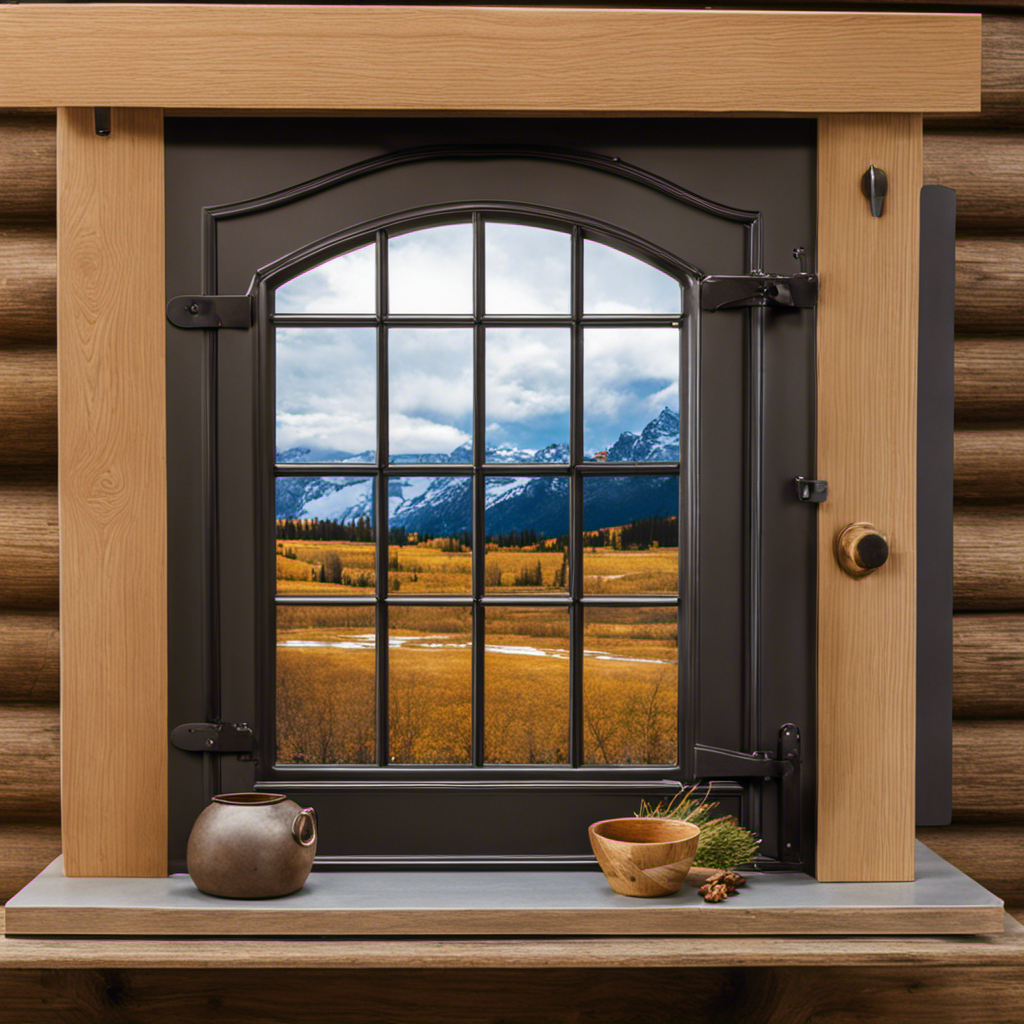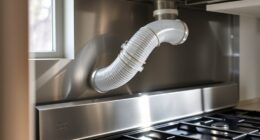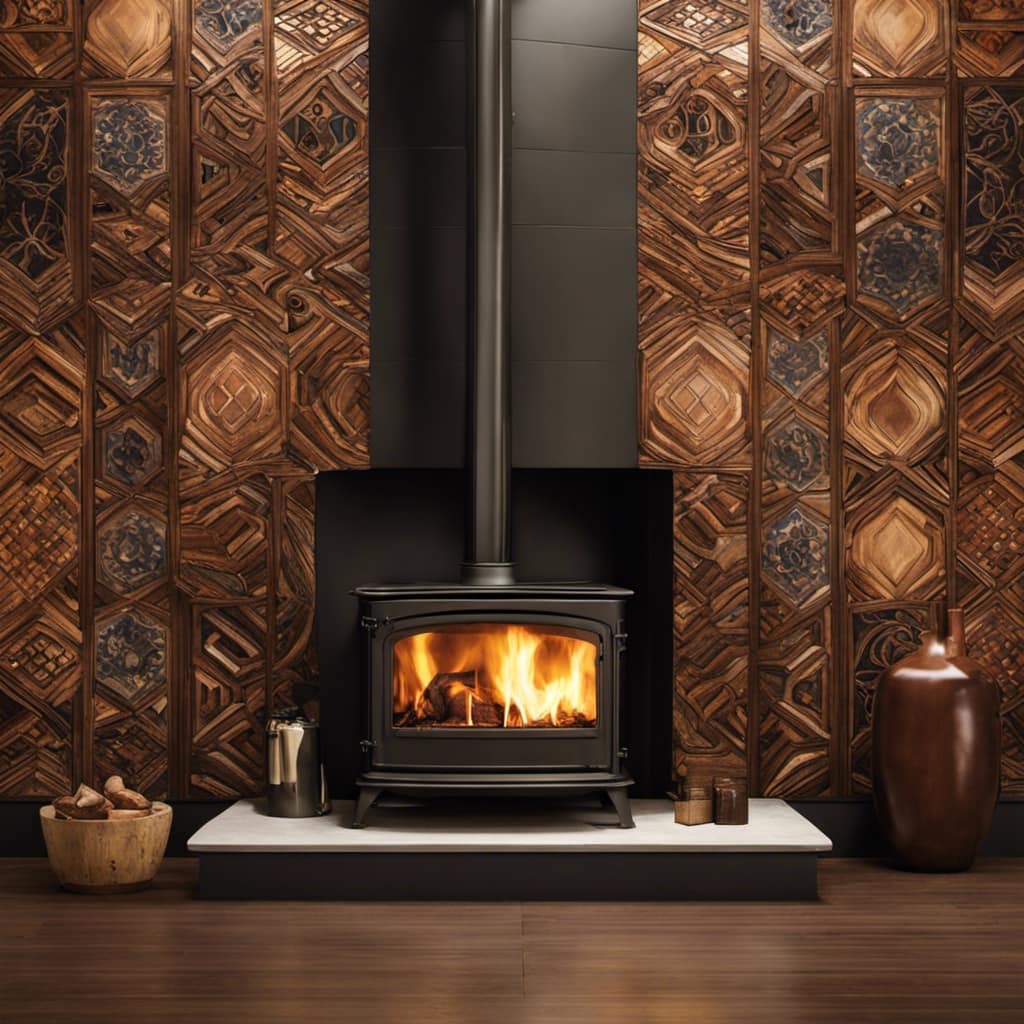
After spending countless hours tending to a wood stove, I can confidently say the heat that comes out of a wood stove pipe is incredibly strong. Truly, it can reach degrees of heat that make the hottest day of summer seem like a mild, refreshing breeze.
But just how hot does a wood stove pipe get? In this article, we’ll explore the average temperature range of a wood stove pipe, factors that affect its heat, and tips for monitoring and controlling it to ensure safety and efficiency.
Key Takeaways
- Wood stove pipes can reach temperatures between 500 to 900 degrees Fahrenheit (260 to 480 degrees Celsius) during operation.
- Factors such as the type of wood being burned, the efficiency of the stove, and the length and insulation of the pipe can affect the temperature range.
- Different types of fuel can produce varying levels of heat, and proper airflow is crucial for efficient heat distribution.
- The type and quality of insulation used in the stove pipe, as well as the length and diameter of the pipe, can influence the maximum temperature it can handle.
The Average Temperature Range of a Wood Stove Pipe
I can feel the heat radiating from the wood stove pipe as it reaches temperatures within the average range. The average temperature range of a wood stove pipe can vary depending on factors such as the type of wood being burned, the efficiency of the stove, and the length and insulation of the pipe. Generally, wood stove pipes can reach temperatures between 500 to 900 degrees Fahrenheit (260 to 480 degrees Celsius) during operation.
Temperature control is essential when using a wood stove to ensure both comfort and safety. To regulate the temperature, it’s important to use the stove’s air controls effectively. Adjusting the air intake controls can help increase or decrease the heat output of the stove. This allows for better temperature control in the room and prevents the stove pipe from overheating.
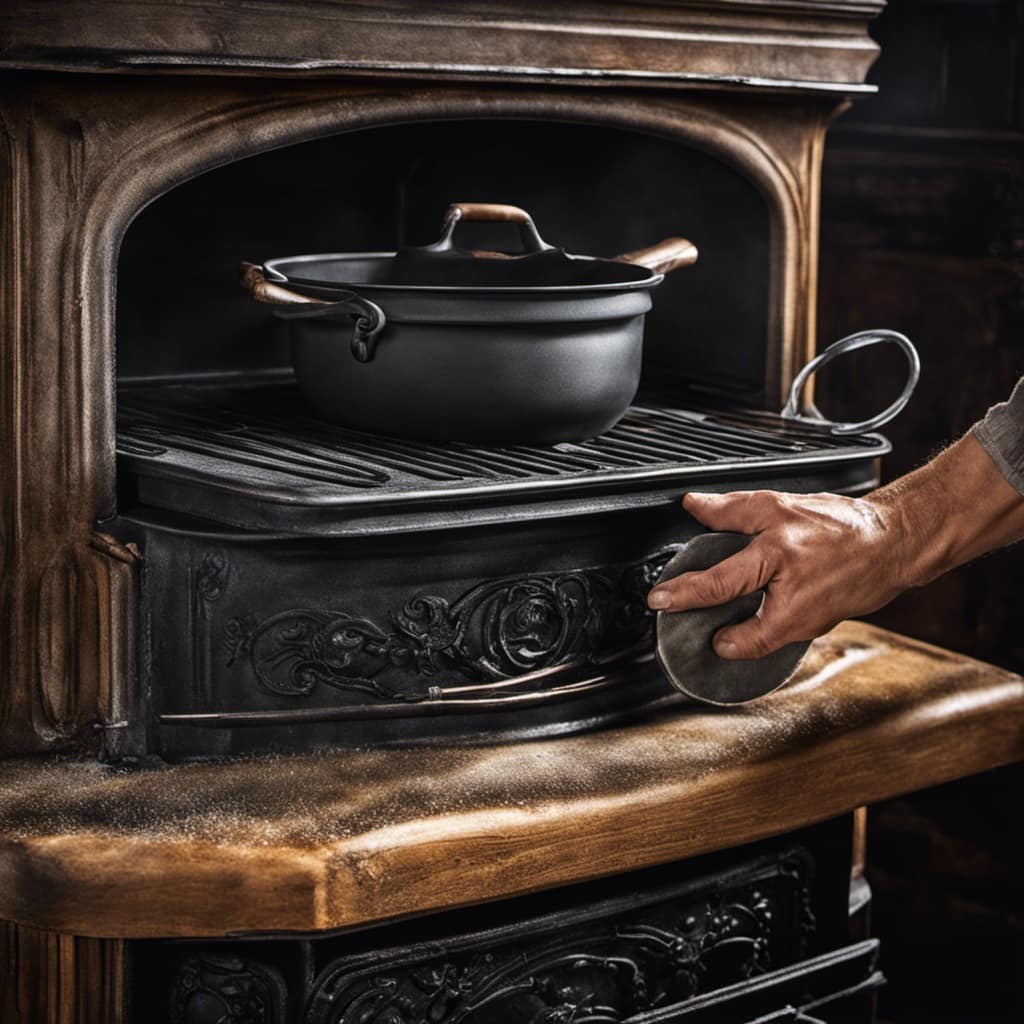
Safety measures should be taken to prevent accidents or damage caused by the high temperatures of the wood stove pipe. Insulating the pipe with non-combustible materials, such as a double wall or using a heat shield, can help reduce the risk of fire hazards. It’s also crucial to keep combustible materials, such as furniture or curtains, a safe distance away from the stove pipe to prevent them from catching fire.
Overall, understanding the average temperature range of a wood stove pipe and implementing temperature control and safety measures are essential for safe and efficient operation of a wood-burning stove.
Factors That Affect the Heat of a Wood Stove Pipe
The temperature of a wood stove pipe is influenced by various factors. Here are some key factors that can affect the heat distribution in a wood stove pipe:
-
Type of fuel used: Different types of fuel, such as wood pellets or coal, can produce varying levels of heat. This affects the temperature of the stove pipe.
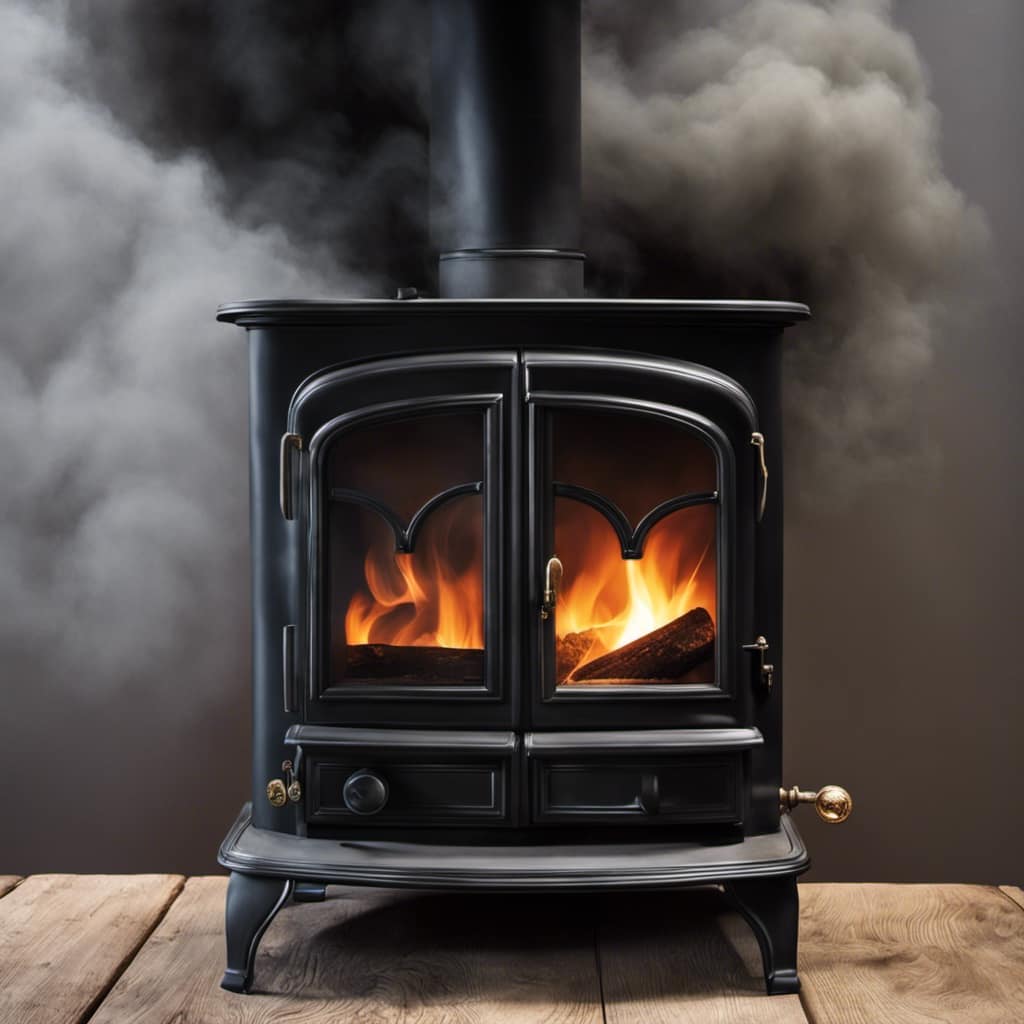
-
Airflow: Proper airflow is crucial for efficient heat distribution. The amount of air intake and how well the stove is ventilated can impact the temperature of the pipe.
-
Insulation materials: The type and quality of insulation used in the stove pipe can affect how much heat is retained and how hot the pipe gets. Insulation helps prevent heat loss and ensures safe operation.
-
Length and diameter of the pipe: The length and diameter of the stove pipe can influence the temperature. Longer pipes may result in lower temperatures, while wider pipes may allow for higher heat distribution.
Understanding these factors is important in determining the maximum temperature of a wood stove pipe. By considering the type of fuel, airflow, insulation materials, and dimensions of the pipe, you can ensure optimal heat distribution and maintain safe operating temperatures.
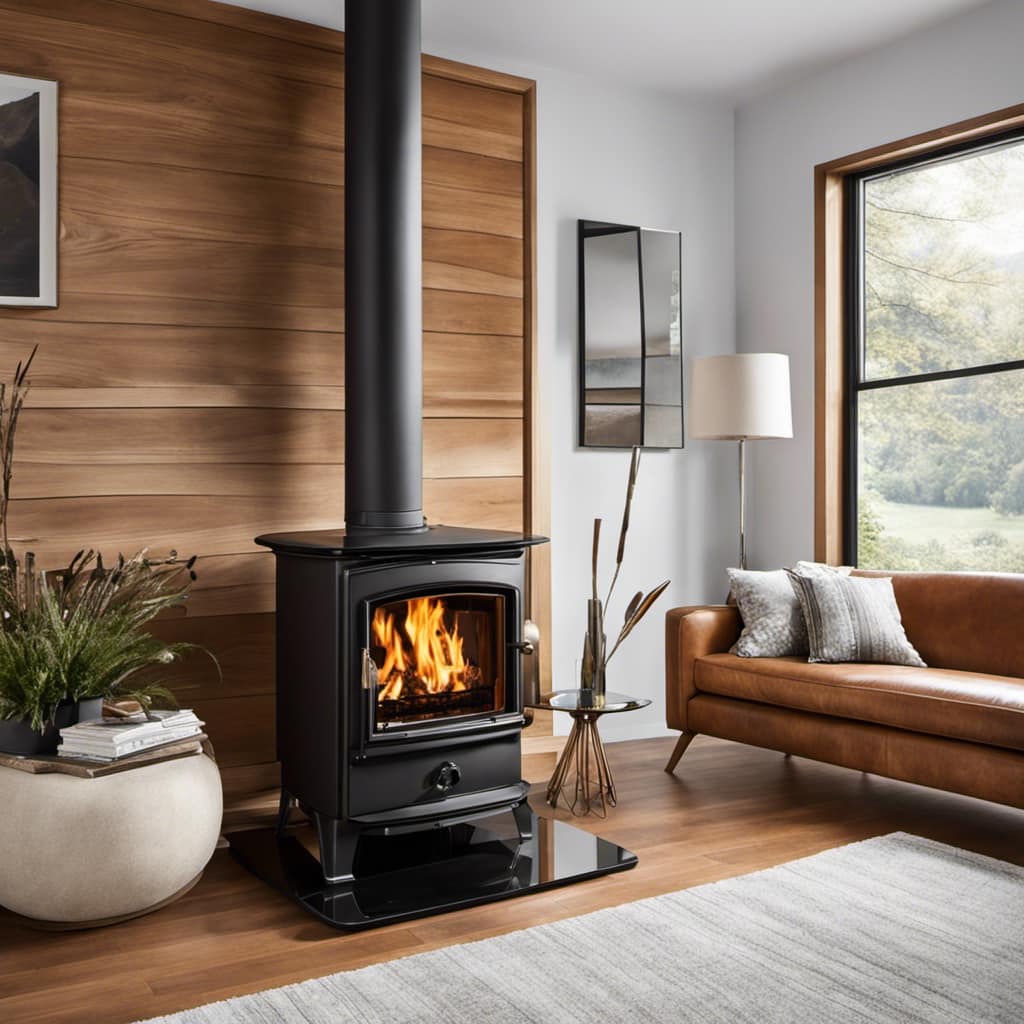
Now, let’s delve into understanding the maximum temperature of a wood stove pipe.
Understanding the Maximum Temperature of a Wood Stove Pipe
To understand the maximum temperature of a stove pipe, it’s important to consider factors like fuel type, airflow, insulation, and pipe dimensions. The maximum temperature of a wood stove pipe is influenced by the type of fuel used, as different fuels burn at different temperatures. Additionally, the airflow in the stove pipe plays a crucial role in heat distribution efficiency. Proper airflow ensures that heat is evenly distributed throughout the pipe, preventing hot spots that can lead to damage. Insulation is another important factor, as it helps to retain heat within the pipe, thus maximizing its temperature. Lastly, the dimensions of the pipe can affect the maximum temperature it can handle. A larger diameter pipe allows for better airflow and heat distribution, while a smaller diameter pipe may restrict airflow and result in higher temperatures.
To provide a visual representation of the factors influencing the maximum temperature of a wood stove pipe, I have created the following table:
| Factors | Influence on Maximum Temperature |
|---|---|
| Fuel type | Determines burn temperature |
| Airflow | Affects heat distribution |
| Insulation | Retains heat within the pipe |
| Pipe dimensions | Influences airflow and heat |
Tips for Monitoring and Controlling the Heat of a Wood Stove Pipe
As someone who’s experience with wood stove pipes, it’s crucial to monitor and control the heat to ensure safety and efficiency.
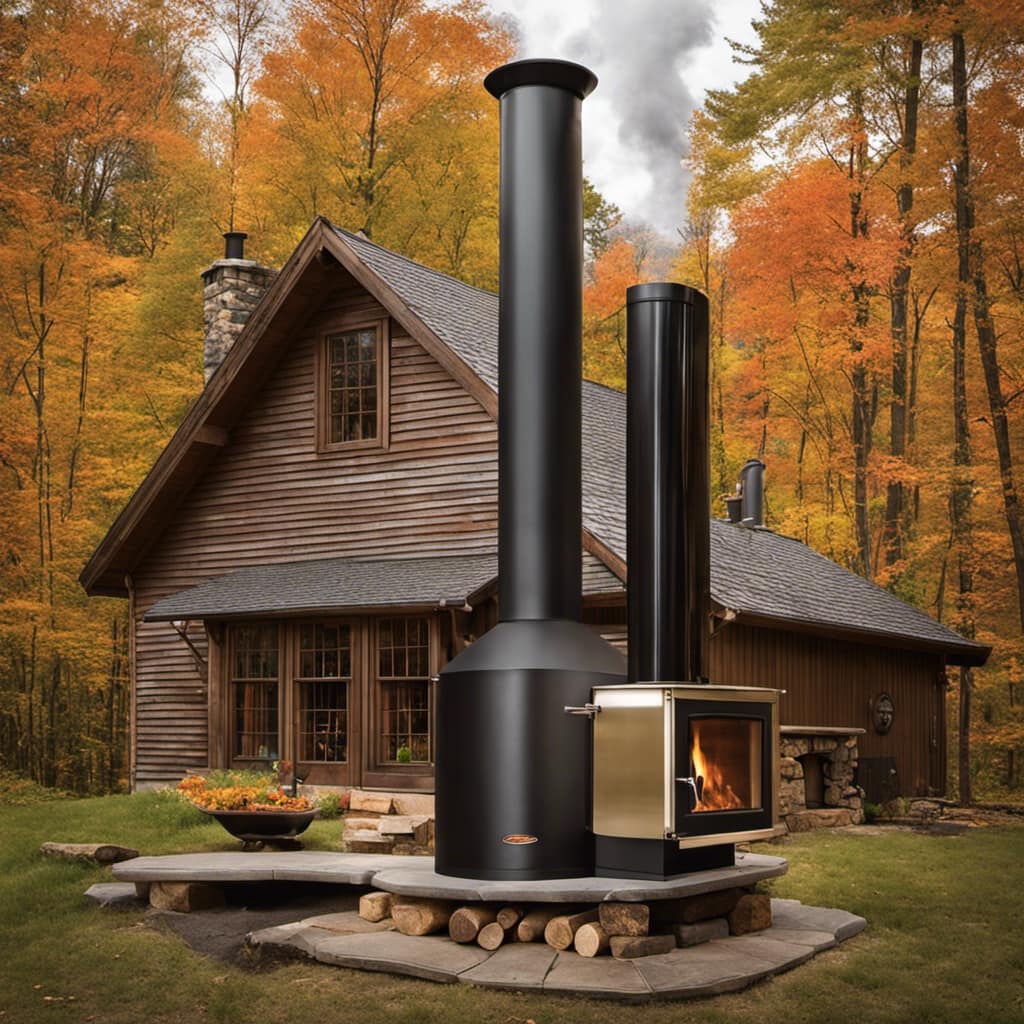
To do this, it’s important to stay within the safe temperature range recommended by the manufacturer.
Additionally, employing heat regulation techniques such as adjusting the damper or using a stove thermometer can help maintain optimal heat levels.
Safe Temperature Range
I can feel the wood stove pipe, and it’s not too hot to touch. It’s important to understand the safe temperature limits for a wood stove pipe to prevent any damage. Here are some key points to consider:
- The safe temperature range for a wood stove pipe is typically between 100°F and 700°F.
- Exceeding the upper limit can lead to structural damage, while staying below the lower limit can cause creosote buildup.
- Installing a stove pipe thermometer can help monitor the temperature and prevent overheating.
- Regular cleaning and maintenance of the stove pipe can also aid in preventing damage.
By following these guidelines, you can ensure that your wood stove pipe stays within the safe temperature range and avoids any potential issues.
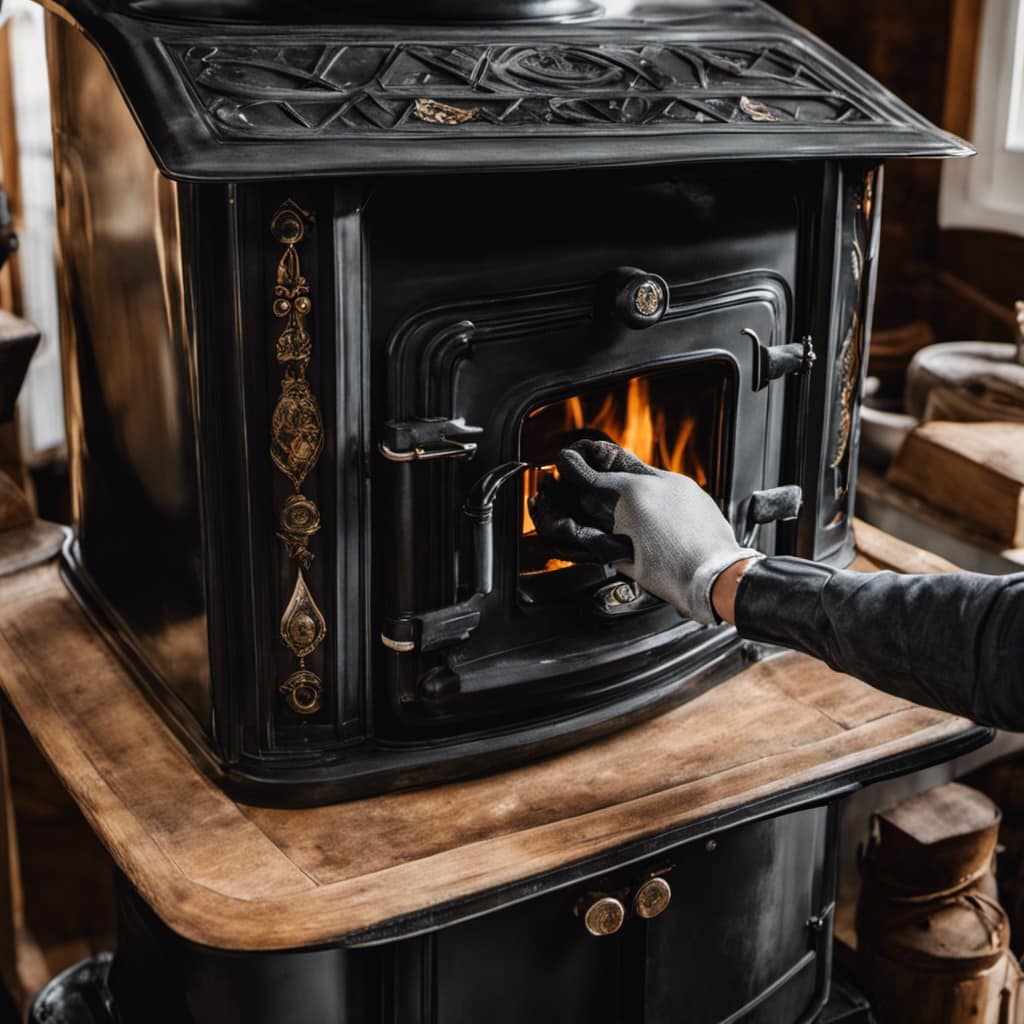
Now, let’s explore some heat regulation techniques to further enhance the safety and efficiency of your wood stove.
Heat Regulation Techniques
Maintaining proper airflow and adjusting the damper can help regulate the temperature of my wood stove. By controlling the airflow, I can ensure that the fire burns at the desired intensity, which in turn affects the heat output.
To distribute heat effectively, I employ various techniques. One method is to use a heat-powered fan that sits on top of the stove and circulates the warm air throughout the room.
Another technique is to position a heat-resistant barrier behind the stove to reflect the heat back into the room. Additionally, I can reduce heat loss by sealing any gaps or cracks in the stovepipe and insulating the surrounding walls.
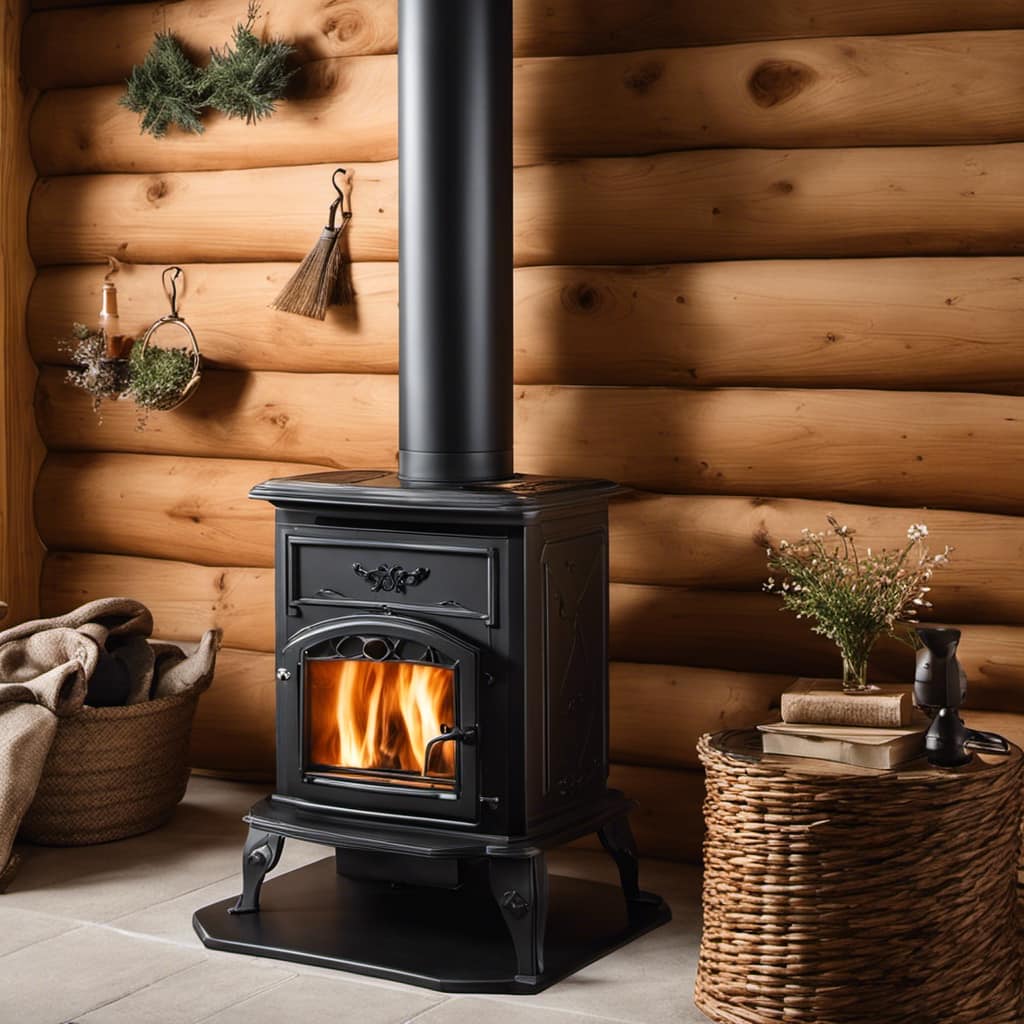
Preventing Overheating Hazards?
To prevent potential hazards, it’s important to regularly inspect and clean the components of my wood stove. Here are some safety precautions I take to prevent overheating risks:
- Check the stovepipe for any obstructions or creosote buildup that could restrict airflow.
- Ensure there’s a sufficient distance between the stovepipe and any flammable materials, such as walls or furniture.
- Install a heat shield on the wall behind the stove to protect it from excessive heat.
- Use a stove thermometer to monitor the temperature and prevent overheating.
By following these safety precautions and regularly maintaining my wood stove, I can ensure that it operates safely and efficiently.
It’s crucial to prioritize safety when using any heating appliance, and taking these preventive measures will help me avoid potential hazards.
Maintaining a Safe and Efficient Wood Stove Pipe System
My main concern is keeping my wood stove pipe system safe and efficient.
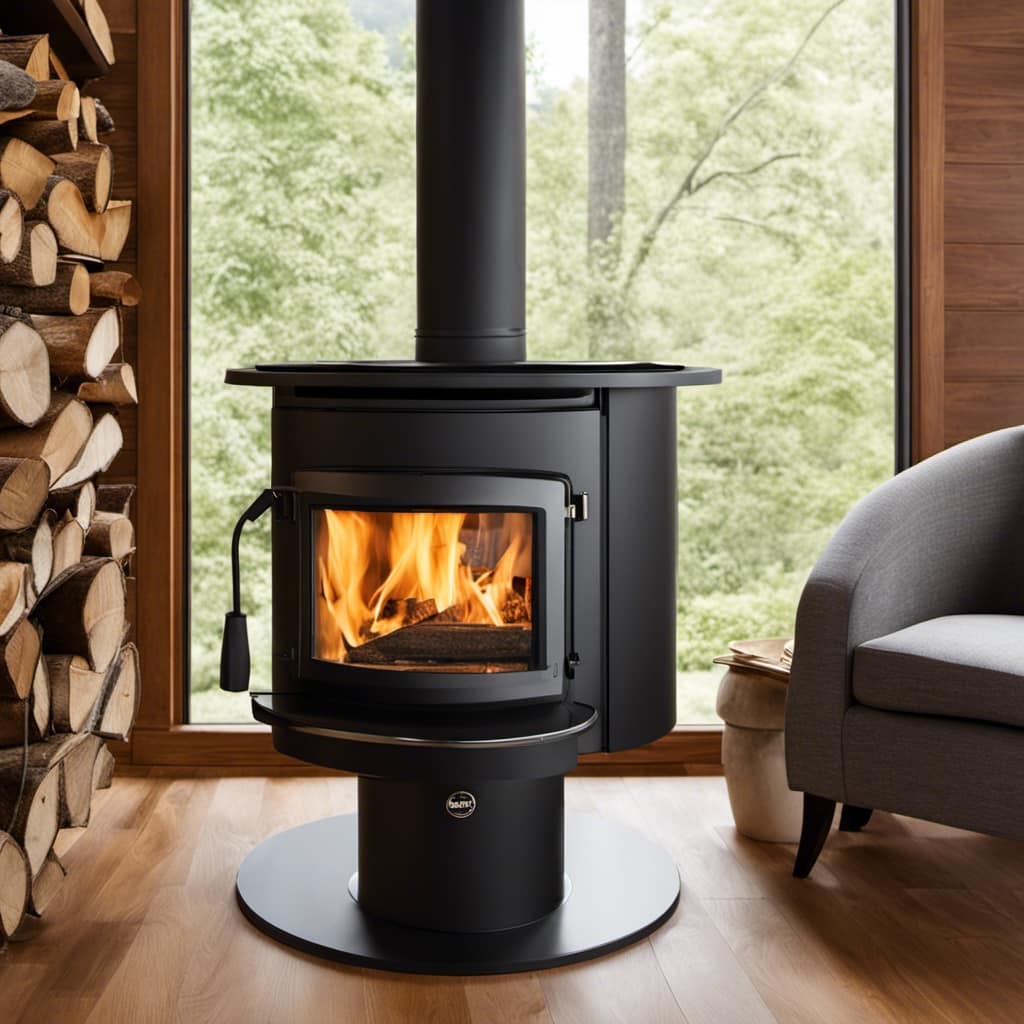
One of the key aspects to ensure the safety and efficiency of a wood stove pipe system is maintaining proper heat distribution. Heat distribution refers to the even spread of heat throughout the system, preventing any hot spots that can potentially lead to overheating and damage. To achieve this, it’s crucial to have a well-designed and properly installed stovepipe system that includes the correct number and placement of heat shields. Heat shields help to disperse the heat evenly and protect the surrounding walls or combustible materials from excessive heat.
In addition to heat distribution, regular chimney maintenance is essential for the safety and efficiency of the wood stove pipe system. Over time, creosote and soot can accumulate inside the chimney, increasing the risk of chimney fires. Therefore, it’s important to have the chimney inspected and cleaned at least once a year by a professional chimney sweep. They’ll remove any buildup and ensure proper airflow, allowing the stove to burn efficiently and reducing the risk of a potentially dangerous chimney fire.
Important Considerations for Insulating a Wood Stove Pipe
Insulating the stovepipe is an important consideration for ensuring the safety and efficiency of my wood stove system. Proper insulation offers several benefits, including reducing heat loss, preventing condensation, increasing draft, and protecting nearby combustible materials.
There are a few common insulation materials that are suitable for stovepipe insulation:

-
Fiberglass: This is a popular choice due to its affordability and effectiveness in reducing heat loss. It’s also easy to install and readily available.
-
Mineral Wool: Similar to fiberglass, mineral wool provides excellent thermal insulation. It’s also resistant to high temperatures, making it suitable for stovepipe insulation.
-
Ceramic Fiber: With its exceptional heat resistance, ceramic fiber is an ideal choice for insulating stovepipes. It can withstand extremely high temperatures without degrading.
-
Vermiculite: This lightweight and fire-resistant material is often used as an insulation layer around stovepipes. It offers good thermal insulation and helps prevent heat from radiating into the surrounding area.
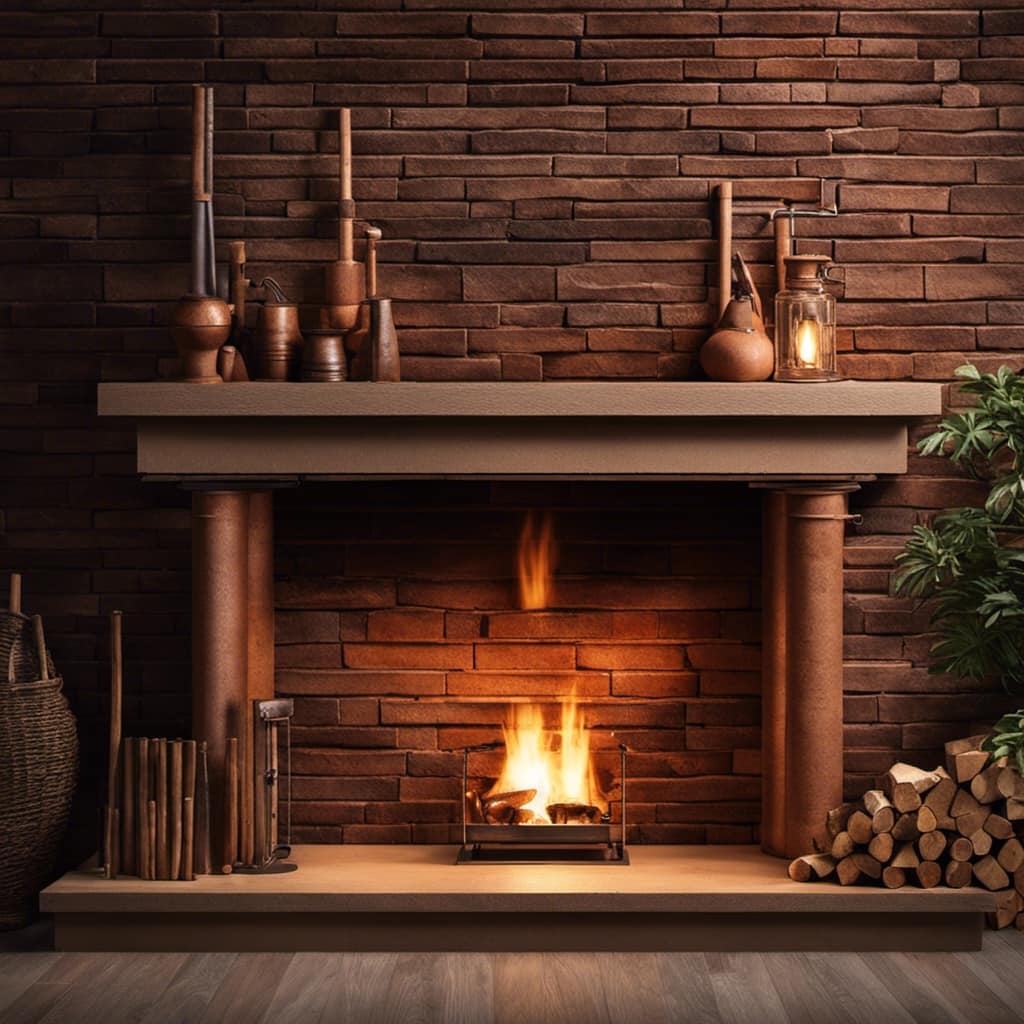
When insulating the stovepipe, it’s important to follow the manufacturer’s guidelines and local building codes. Insulation should be securely attached to the pipe and properly sealed to prevent any gaps or air leakage.
Frequently Asked Questions
How Do I Properly Clean and Maintain a Wood Stove Pipe System?
Properly cleaning and maintaining a wood stove pipe system is essential for its efficiency and safety.
To ensure proper cleaning, start by removing any built-up creosote using a chimney brush.
Regularly inspect the pipe for any signs of damage, such as cracks or corrosion, and address them promptly.
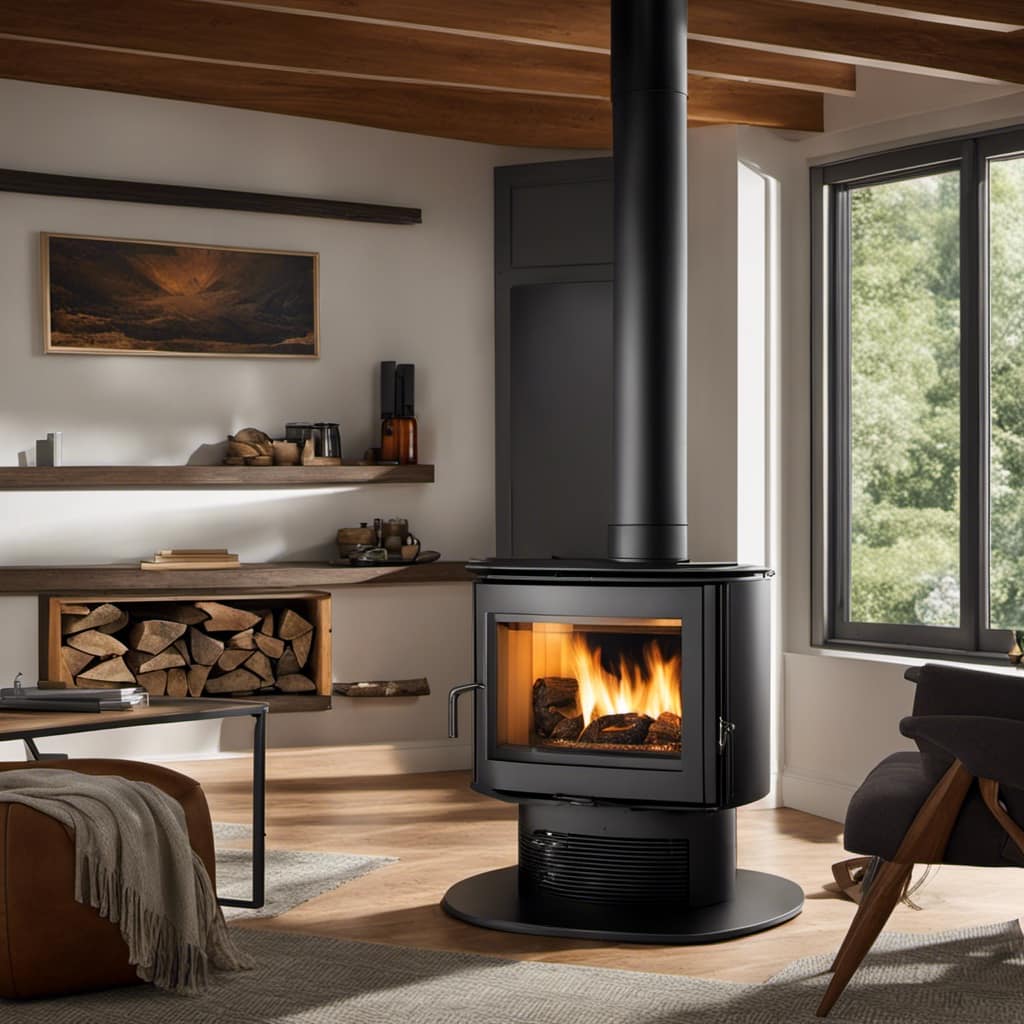
Additionally, it’s important to keep the pipe clear of any debris or obstructions.
Can I Use Any Type of Wood in My Wood Stove, or Are There Specific Types That Produce More Heat?
When it comes to burning wood in a stove, not all types are created equal in terms of heat production. Some woods, like oak and hickory, have a higher heat output and longer burn time compared to softer woods like pine. It’s important to choose the right type of wood for optimal heat production and efficiency.
Additionally, when loading wood into a stove, it’s best to stack it loosely to allow for proper airflow and combustion.
What Are Some Common Signs of a Malfunctioning Wood Stove Pipe System?
Excessive smoke or soot buildup and cracks or damage to the pipe are common signs of a malfunctioning wood stove pipe system. When these issues occur, it’s important to address them promptly to ensure the safe and efficient operation of the wood stove.

Regular inspections and maintenance can help identify and prevent potential problems. If you notice any of these signs, it’s recommended to consult a professional for further evaluation and necessary repairs.
Are There Any Regulations or Guidelines I Should Follow When Installing a Wood Stove Pipe?
When it comes to installing a wood stove pipe, it’s important to follow regulations and guidelines to ensure safety.
I remember when I first installed my wood stove pipe, I was overwhelmed with all the information out there. But by adhering to the regulations and guidelines provided by the manufacturer and local building codes, I was able to create a safe and efficient installation.
It’s crucial to do your research and seek professional advice if needed to ensure a proper installation.
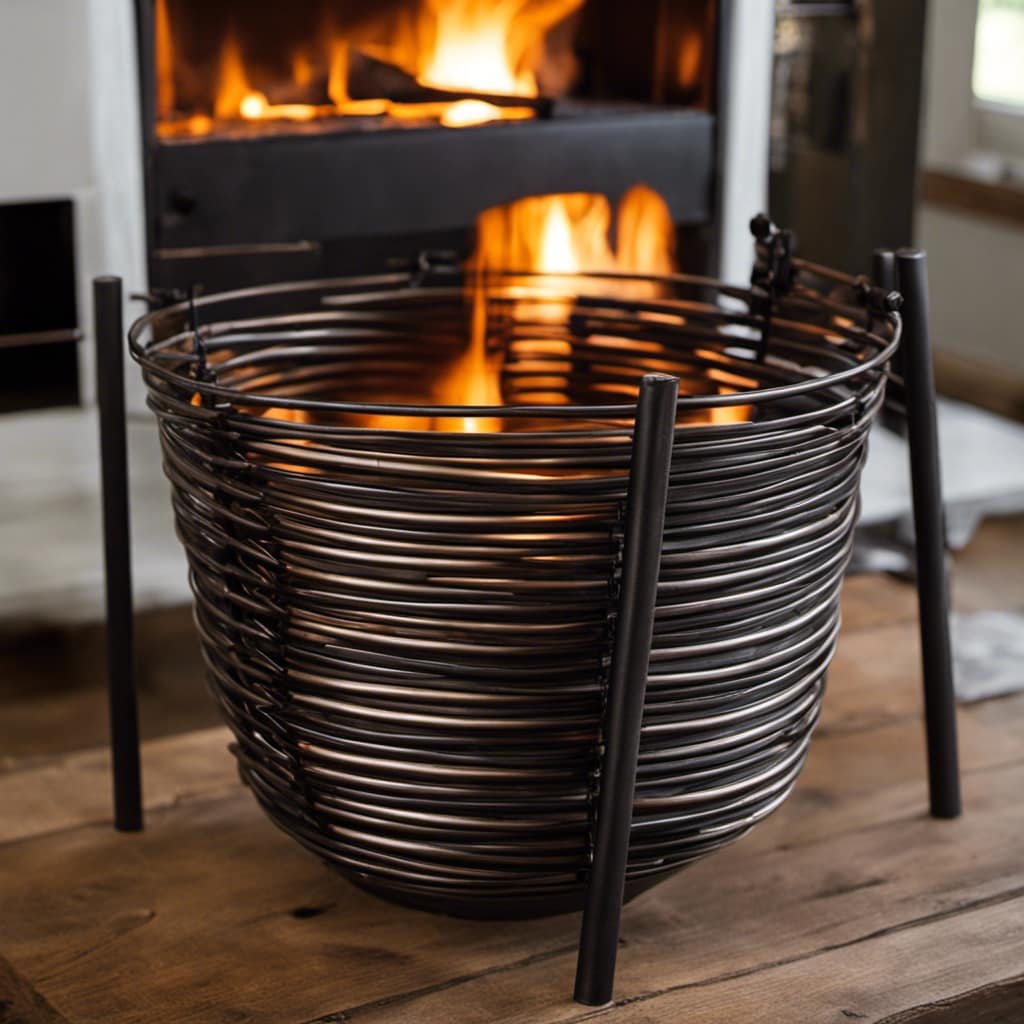
How Can I Effectively Reduce the Heat Output of a Wood Stove Pipe if It Becomes Too Hot for My Space?
If the wood stove pipe becomes too hot for your space, there are several ways to effectively reduce the heat output.
One option is to install insulation around the pipe to help contain and dissipate the heat. There are various insulation materials available, such as ceramic fiber blankets or high-temperature insulation sleeves. These can help to reduce the surface temperature of the pipe and make it safer for your surroundings.
It’s important to consult with a professional to determine the best insulation option for your specific needs.
Conclusion
In the fiery dance of warmth and comfort, the wood stove pipe plays a vital role. With temperatures ranging from 500 to 900 degrees Fahrenheit, it channels the heat, carrying it safely upwards. Factors like stove design and fuel quality influence the pipe’s heat.
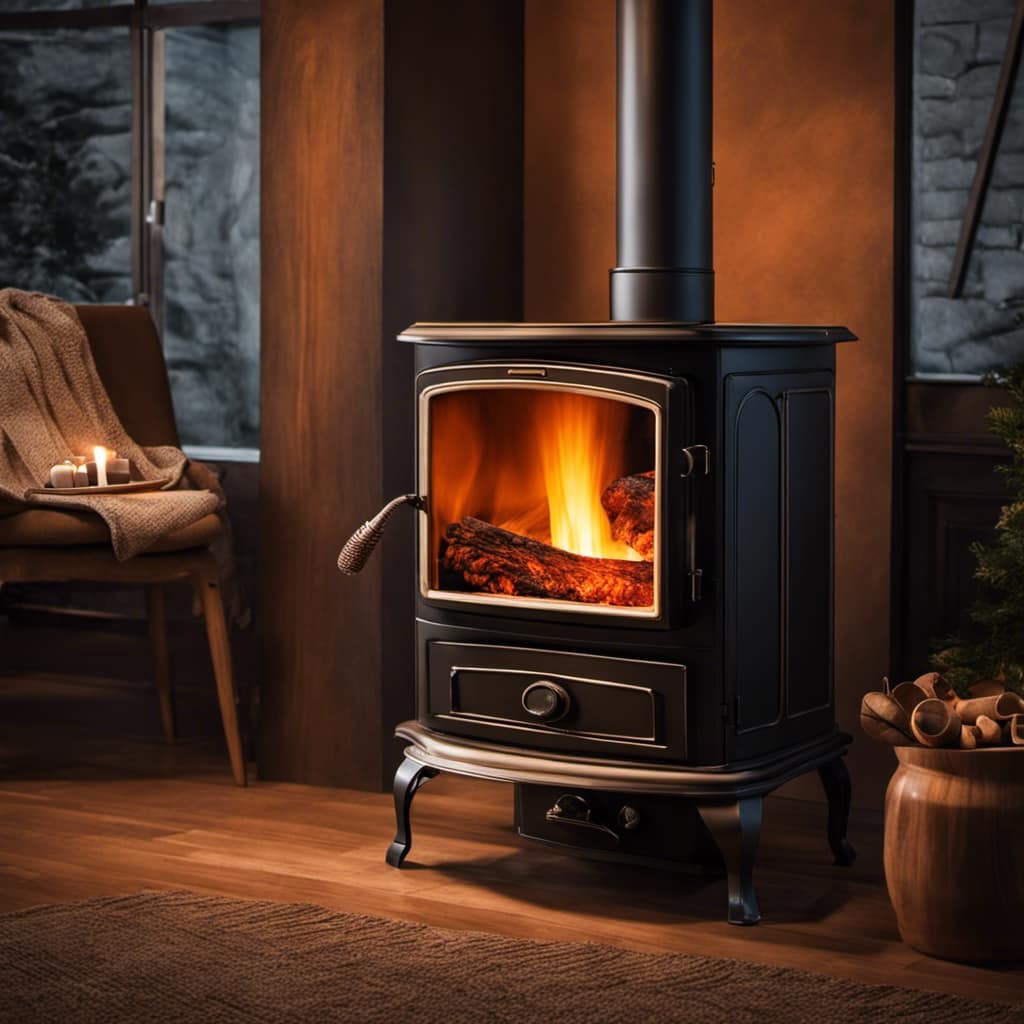
To maintain control, monitor the temperature and ensure proper insulation. By understanding the dynamics, we can embrace the cozy embrace of the wood stove pipe, keeping our homes warm and secure.
Growing up surrounded by the vast beauty of nature, Sierra was always drawn to the call of the wild. While others sought the comfort of the familiar, she ventured out, embracing the unpredictable and finding stories in the heartbeat of nature.
At the epicenter of every remarkable venture lies a dynamic team—a fusion of diverse talents, visions, and passions. The essence of Best Small Wood Stoves is crafted and refined by such a trio: Sierra, Logan, and Terra. Their collective expertise has transformed the platform into a leading authority on small wood stoves, radiating warmth and knowledge in equal measure.



